We are developing the social individualist meta-context for the future. From the very serious to the extremely frivolous... lets see what is on the mind of the Samizdata people.
Samizdata, derived from Samizdat /n. - a system of clandestine publication of banned literature in the USSR [Russ.,= self-publishing house]
|
A Brief History of Ulster (continued)
In the search for a replacement for Stormont the government came to the conclusion that any scheme had to be acceptable to the constitutional nationalists of the Social Democratic and Labour Party (SDLP) which had been formed in 1970. After negotiations held at Sunningdale in Berkshire, a power-sharing agreement was reached between the SDLP and the leadership of the Unionist Party which included a council of Ireland.
The Ulster Unionist Party split over the Council of Ireland. In the general election of February 1974 the agreement was decisively rejected at the polls. The government and the parties to the agreement ploughed on regardless. In May 1974, the Ulster Workers’ Council organised a general strike, aimed at bringing down the Council of Ireland. The strike was successful beyond its leaders’ wildest dreams, ending in the collapse of the power-sharing Executive.
[“wildest dreams”?]
In the absence of political stability the IRA campaign continued. Bombings and shootings became an every day event, added to by a new mainland bombing campaign. The government’s response was to pass the Prevention of Terrorism Act.
[Remember that? I don’t save that named persons could be banned from entering Great Britain but be perfectly free to walk around Ulster.
By the way, the timeline here is wrong. Shootings were an everyday event by 1971 and bombings by 1972. The mainland bombing campaign began in 1973.]
Between 1975-6 a constitutional convention was held which came close to agreement but failed. Internment was phased out and the government embarked upon a policy of treating terrorists as ordinary criminals. In 1975 the IRA murdered the British Ambassador to Ireland, Christopher Ewart-Biggs and in one day in 1979 murdered Lord Mountbatten while he was holidaying in the Republic of Ireland and 18 soldiers of the Parachute Regiment at Warrenpoint.
In 1981, Republican prisoners at the Maze jail demanded political status and began a dirty protest which grew into a hunger strike. Bobby Sands and 9 others died but the government stood firm.
[Hmm. IIRC that’s not quite true. They stood firm until the hunger strike was abandoned and then gave in.]
During the 1984 Conservative Conference, the IRA exploded a bomb in the main conference hotel where the Prime Minister, Margaret Thatcher, and members of the Cabinet were staying. In November 1985, the British and Irish government signed the Anglo-Irish Agreement in which the Republic of Ireland was given a say in the affairs of Northern Ireland in return for promises of greater security co-operation. The agreement was condemned by Unionists who resigned their seats in protest.
The Anglo-Irish Agreement did little to suppress IRA terrorism. In 1987 they exploded a bomb at a Remembrance Day ceremony in Enniskillen, killing 11. In 1990 they murdered Ian Gow MP, Parliamentary Private Secretary to Margaret Thatcher. In 1992 and 1993 the IRA exploded two huge bombs in the City of London. The damage ran into billions.
On 31st August 1994 the IRA declared a ceasefire. On 9th February 1996 they ended it, exploding another huge bomb, this time at South Quay in London’s Docklands. Two men died.
Since 1969 the world has become familiar with the bombings, shootings, beatings, boycotts and expulsions.
[Actually, the world probably wasn’t too familiar with the last three.]
Part I
Part II
Part III
Part IV
Part V
Part VI
Part VII
Part VIII
Part IX
A Brief History of Ulster (continued)
During the 1960s a number of complaints were made about Northern Ireland’s government which had been dominated by the Ulster Unionist Party since its inception. The thrust of the allegations was that Unionists had used their power in such a way as to make Catholics second-class citizens. There were a number of specific charges: that local government boundaries had been gerrymandered to the benefit of Unionists, that the local government franchise had not been reformed (again to the advantage of Unionists) and that Unionist local authorities discriminated against Catholics in housing and jobs. Complaints were also levelled at the B-Specials who, it was alleged, were exclusively Protestant. These allegations were denied by Unionists.
In 1967, an organisation calling itself the Northern Ireland Civil Rights Association was set up to campaign against the alleged abuses of power. It claimed to be a cross-community group: Unionists claimed that it was an IRA front. Whatever the case was the facts are clear enough. The NICRA organised marches which led to conflict with the police and Protestants. After a particularly violent encounter in Londonderry on 5 October 1968, riots became a regular event throughout the province. In August 1969, after the annual (Protestant and unionist) Apprentice Boys’s of Derry parade in Londonderry, there was a riot by Catholics in the Bogside area of the city. Shortly afterwards there was a similar riot in Belfast. The Royal Ulster Constabulary (RUC – the police) lost control and the army was brought in to keep the peace. This was the beginning of the Troubles that continue to this day.
Shortly afterwards the B-Specials were stood down and the RUC were disarmed. The army prevented members of the RUC from patrolling in nationalist areas and allowed the creation of No-Go areas where the “Queen’s writ did not run”.
The IRA used the opportunity to organise. By June 1970 it was making attacks on the Army and in February 1971 it murdered its first soldier. Violence in all its forms appeared to be escalating out of control and, in August 1971, the Stormont government, under Prime Minister Bryan Faulkner, introduced internment or detention without trial. The backlash from the IRA was ferocious. In January 1972, at the end of an illegal march against internment in Londonderry, there was an exchange of gunfire between the army and others resulting in the deaths of 13 civilians.
[I grate at my use of the word “murder”. “Killed” would be better. And when I say “illegal”, “banned” would be better.
The army was absolutely sure it was being fired on. By this time, it was a standard IRA tactic to use rioters as human shields while firing on soldiers. Just as in the killing of Lyra McKee the other day.]
Whatever the facts of the matter, Her Majesty’s Government, moved to abolish Stormont (despite the fact that Stormont had nothing to do with the army action) and established Direct Rule with a Secretary of State for Northern Ireland.
The abolition of Stormont, seen by many unionists as the only institution they could trust, provoked an immediate and bloody reaction. Recruitment to the UVF (no relation to the UVF of 1912) increased and the Ulster Defence Association (UDA) was formed. These groups began a campaign of sectarian murder.
[Hmm there seems to be a bit missing here. I was told on good-ish authority that the formation of the UDA was in response to sectarian violence from republicans. Although after a while it is difficult to tell who is doing the titting and who the tatting.]
Part I
Part II
Part III
Part IV
Part V
Part VI
Part VII
Part VIII
Part IX
Update 10/7/19
Actually there really was a bit missing there – there being differences between the published and electronic versions. The published version says, “Protestant paramilitary groups began a campaign of sectarian murder which in one form or another continued until 1994 when most of them declared a cease-fire following that announced by the IRA. (By the early 1990s Protestant paramilitaries were responsible for more killings than the IRA.)”
A Brief History of Ulster (continued)
In 1641, at a time of political instability in England and Scotland, there was a rebellion in Ireland against English rule. This led to the deaths of thousands of Protestants and only ended when Cromwell restored order in 1649.
[20 years ago I didn’t know this, but it seems that Protestants in Ulster put up a stout defence.]
In 1688, the Catholic king of Britain, James II, was deposed and came to Ireland to set about recapturing the throne from the new king, William III of Orange. Protestants remained loyal to William and in Londonderry held out for 114 days when they came under siege from James’s forces. The next year, on 1st July 1690, William inflicted a decisive defeat on James at the Battle of the Boyne. The Protestants were safe.
[King of Britain, eh? I think the correct title would have been King of England, Scotland and Ireland.
Were Protestants in any great danger at this time? Well, they certainly thought so.]
While Protestants were safe they were far from equal. While members of the Church of Ireland dominated the Irish parliament, presbyterians were excluded. In 1798, this led to a revolt which nationalists have labelled the “United Irishmen” Rebellion. In reality it was two rebellions, one in Ulster and one in the South. Both were put down but not before southern rebels in Wexford had carried out a massacre of their Protestant neighbours. This tends to undermine the claim that Irishmen were in some way “united”.
[This became known as the Scullabogue Barn Massacre
For those who don’t know Church of Ireland = Anglican = wishy-washy but Protestant.]
During the 19th century there was a growing movement to give Ireland some autonomy in her government. This movement did not gain any significant support in Ulster where Protestants feared that they would end up separated from the empire in a state dominated by the Catholic Church. After two unsuccessful attempts to legislate for Home Rule, an act did pass through the House of Commons in 1913. Ulster Unionists regarded this as a betrayal and resolved to resist the imposition of Home Rule in Ulster with their own army, the Ulster Volunteer Force.
In 1914, just at the moment that a civil war in Ireland seemed inevitable, the First World War broke out and Home Rule was suspended until the end of the war. Impatient for all out independence a small band of Republican extremists led a rebellion in Dublin in Easter 1916. The rebellion was quickly put down but after that Sinn Fein/IRA grew in importance and influence, eclipsing the constitutionalist Home Rulers.
[It is difficult to overemphasise the way that the Home Rule issue dominated politics at the time. It was not unlike Brexit is now.]
In the general election of 1918, Sinn Fein, demanding an all-Ireland republic, all but swept the board in what is now the Republic of Ireland while the Ulster Unionist Party all but swept the board in what is now Northern Ireland. The IRA began a guerilla war against the British presence in Ireland. The UK parliament legislated for two separate parliaments in Ireland, one for the north and one for the south. This was the first time that His Majesty’s Government had accepted that Ulster was different. The IRA refused to accept this settlement continuing its campaign against British forces. After another year of war the Anglo-Irish Treaty was signed which created the Irish Free State with dominion status but kept Northern Ireland as part of the United Kingdom albeit with its own parliament. For all their bombings and shootings, the IRA had achieved virtually nothing which had not already been offered to democratic politicians.
[Well, I suppose dominion is better than devolution. But then again, for how long would dominion have been denied? Of course, I say it’s better but better for whom?]
Unionists wanted to believe that the 1921 settlement had settled things for good; but Irish nationalists had other ideas. Irish nationalists and republicans, simply did not accept the will of the majority in Northern Ireland and demanded that it be incorporated into their state. At the time this was not an uncommon way of thinking, with similar aspirations being held by Hitler and Mussolini.
Although an attempt had been made to incorporate Ulster into the Irish Free State in 1921-22, the IRA being defeated by the Northern Ireland Government, it was not the end of the matter. In 1937, the Free State severed almost all of its links with the United Kingdom, announcing a constitution in which Articles 2 and 3 laid claim to the whole of the island of Ireland.
[You don’t “announce” a constitution do you? But what do you do? Publish? Too weak. Promulgate? Too pompous. Enact? Introduce?]
During the 1940s and the 1950s there were sporadic attempts by the IRA to bring down the Northern Ireland’s government, which by now had based itself at Stormont, on the outskirts of Belfast. Each time these attempts foundered on the twin rocks of internment and effective patrolling by Ulster’s B-Special constabulary.
Part I
Part II
Part III
Part IV
Part V
Part VI
Part VII
Part VIII
Part IX
A few months ago Karen Bradley, the Northern Ireland Secretary, revealed that she knew precious little about the unusual conditions that exist in Ulster. With the recent killing of a journalist by some version of the IRA and with the 50th anniversary of the beginning of “The Troubles” coming up, it would be useful to be in possession of a concise explanation of why Ulster is the way it is and how it got that way.
Fortunately, just such an explanation exists. In 1998, the Friends of the Union published an excellent little pamphlet entitled Ulster for Beginners. I know all about its excellence largely because I was responsible for writing it.
Luckily – or unluckily? – I have kept a computerised draft all these years. It’s a bit too long for a blog posting so I have broken it up into chunks. What follows is the first chunk along with comments [in square brackets] by my older – and hopefully wiser – self. I will put up further installments assuming there are not too many objections.
→ Continue reading: Ulster for Beginners – Part I
I am going to assume for the purposes of argument that Boris Johnson will shortly become leader of the Conservative Party and Prime Minister.
I am also going to assume that Parliament will prevent Boris from taking the UK out of the European Union. Even if he makes it a matter of confidence.
At this point the usual response would be to call a general election.
B-B-But… Nige. And his Brexit Party. Nige is not going to go away. Nige doesn’t want to go away. He did that once and it didn’t go well. And he has won a national election. And he beat the Conservatives into third place in a recent by-election.
All things being equal if a general election is called, the Brexit Party will stand and split the Conservative vote while the Conservative Party will stand and split the Brexit vote. Yeah, I know the Brexit Party will get some votes from former Labour supporters but mostly it will come from the Conservatives. So, the vote will be split, Labour will win and we’re all off to the Gulag.
Boris knows this, Nige knows this. Or, at least I hope they do. Therefore, they must avoid splitting the vote and they must make a deal (with one another, not the EU, that is).
B-B-But… I can’t think of two people less likely to make a deal. They are both political entrepreneurs. They are both outsiders who have achieved their position on their own terms and they like being in charge. They are NOT team players and yet a deal requires team playing. This is not looking good.
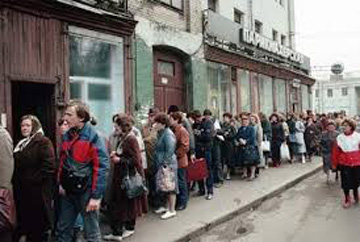 Britain this time next year Esprit d’escalier: it occurs to me that the Queen might ask someone else to form a government rather than dissolving Parliament and holding a general election. Ach! Scrub that. There is no one else who could come even remotely close to commanding a majority. Ooh hang about! What about Cooper or Grieve or both? A sort of Chuk 2? Is it a possibility? Would it make any difference?
What a wretched lot of weaklings we have in high places at the present time!
– Douglas Haig, diary entry 1 September 1918. This was written in response to the Cabinet’s refusal to take responsibility for any failure of Haig’s upcoming offensive. The Storming of the Hindenburg Line was, of course, a huge success. Any similarity between this and more recent events is entirely coincidental.
(Apart from the free trade bit)
This is an ad for the Liberal Party going into the 1918 General Election. Note that the Liberal Party split during the First World War with some following Lloyd George and others continuing to follow Asquith. This ad is for the Asquith Liberals. Also note this is not an ideological division; Lloyd George’s Coalition Liberals are standing on much the same platform. Also, also note that the statist rot set in well before the First World War.
In December 1918, this Liberal Party was more or less wiped out with Asquith losing his seat. In subsequent elections the general Liberal vote collapsed even further until by the 1950s the by-then re-unified party had only a handful of MPs.
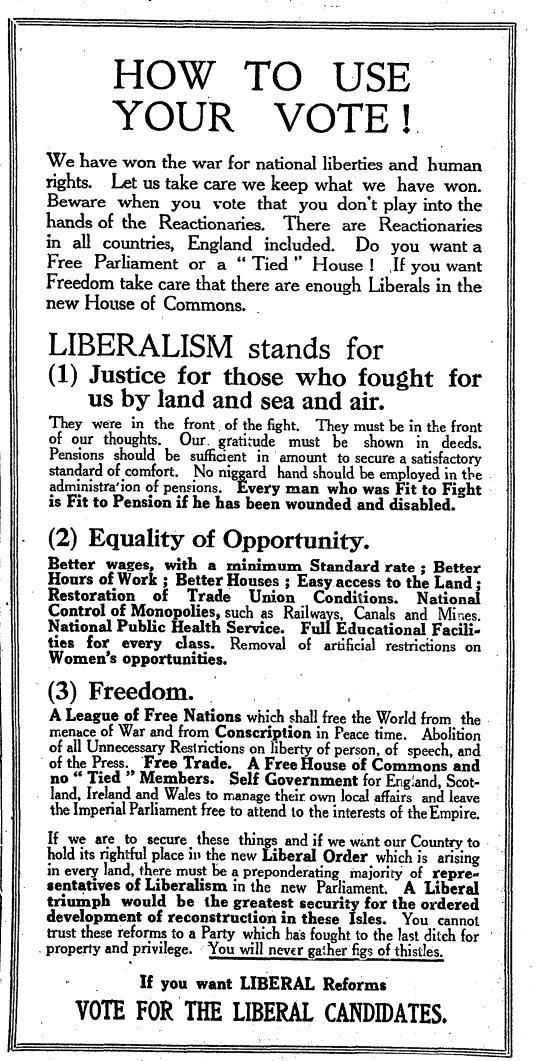 The Times 5 December 1918 p5
Public Eye was made from 1965 to 1975 and contains adult themes, outdated attitudes and language which some viewers may find offensive.
– Warning message put up by Talking Pictures TV prior to its re-runs of the series. For those unfamiliar with Public Eye, think Colombo meets The Rockford Files in the English suburbs.
I was always taught that the Maginot Line was a military white elephant – colossally expensive and easily by-passed. But this guy begs to differ – kinda sorta. Short version: it would have worked if it hadn’t been for those flibbertygibbet Belgians! Even so he doesn’t address the question of how Germany would have been brought to heel by means of an entirely defensive strategy.
I love this sort of challenge to the narrative and I understand that Samizdata’s own Bertrand Maginot will be joining me. For once.
I know all of us on this side of the Atlantic are terribly excited about the latest Brexit/leadership crisis but – unbelievable as it may sound – there are even bigger fish to fry. A stock market crash is looming. Yes, I know I have said that every year since the 2008 financial crisis but this time it really, really, really might actually happen.
In this presentation – which sadly includes a little bit of advertising – Jesse Colombo outlines why he thinks a crash is imminent.
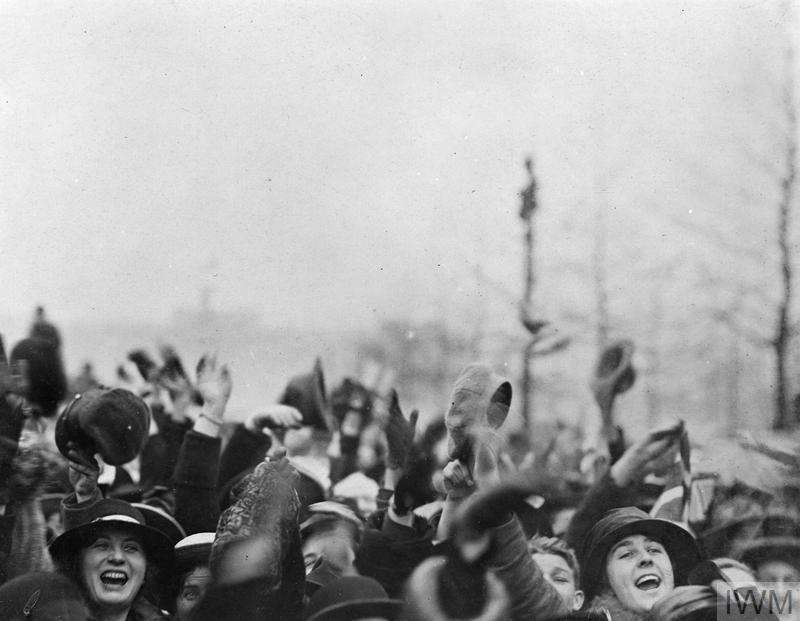 THE ARMISTICE DAY, NOVEMBER 1918 (Q 80135) Crowd cheering outside Buckingham Palace during the Armistice Day, 11 November 1918. Copyright: © IWM. Original Source: http://www.iwm.org.uk/collections/item/object/205324739 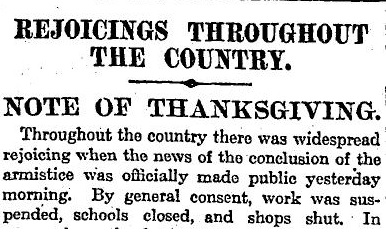 The Times 12 November 1918 p10. Right click for full page.
Of course, officially speaking there was never a First Battle of Passchendaele but most of us are aware that in 1917 in the space of 3 months at the cost of 80,000 dead the British advanced from just outside Ypres to Passchendaele Ridge.
In September 1918, they – along with the Belgians(!) – did it in a day.
A day. A couple of months ago I wrote about the Battle of Amiens. I still find it astonishing. And I find this astonishing too. Because it is so difficult to explain. The British army had been battered in the Ludendorff Offensive. It had been clinging on. It had lost huge numbers of men. The sense of panic went right up to the top. And yet, when it went on the offensive itself it found it was seemingly pushing at an open door. Second Passchendaele – as I choose to call it – wasn’t even the biggest victory that week. Sure, the British Army had got a lot better at attacking. There is a clear line of progression from 1916 to 1917 and one must assume that that continued in 1918. But there is nothing to suggest this amazing series of victories.
I imagine that German morale must have suffered a catastrophic collapse. But even that doesn’t make sense. More Britons died in the Hundred Days Offensive than at First Passchendaele. The Germans might have been down but they weren’t out. At least not yet.
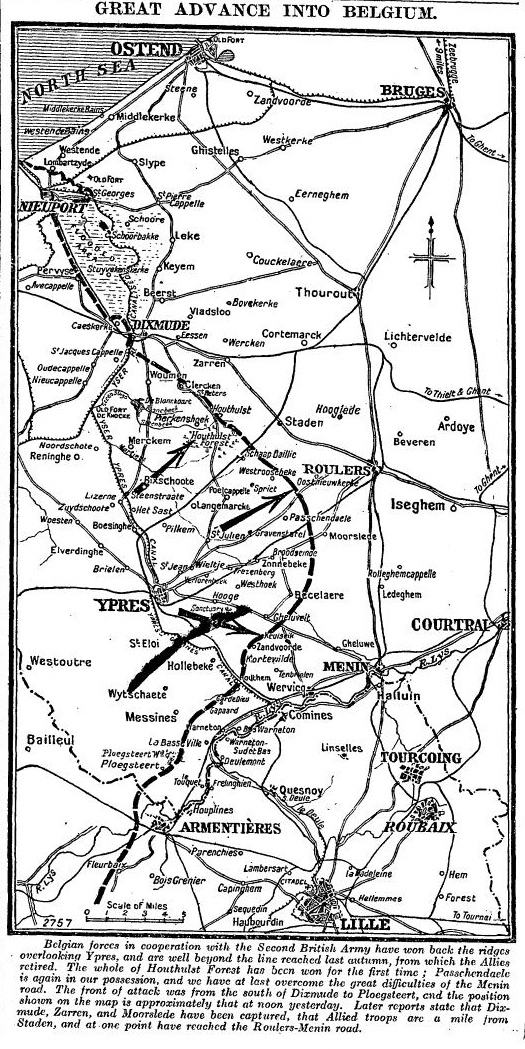 The Times 30 September 1918. Right click for the full page.
|
Who Are We? The Samizdata people are a bunch of sinister and heavily armed globalist illuminati who seek to infect the entire world with the values of personal liberty and several property. Amongst our many crimes is a sense of humour and the intermittent use of British spelling.
We are also a varied group made up of social individualists, classical liberals, whigs, libertarians, extropians, futurists, ‘Porcupines’, Karl Popper fetishists, recovering neo-conservatives, crazed Ayn Rand worshipers, over-caffeinated Virginia Postrel devotees, witty Frédéric Bastiat wannabes, cypherpunks, minarchists, kritarchists and wild-eyed anarcho-capitalists from Britain, North America, Australia and Europe.
|








